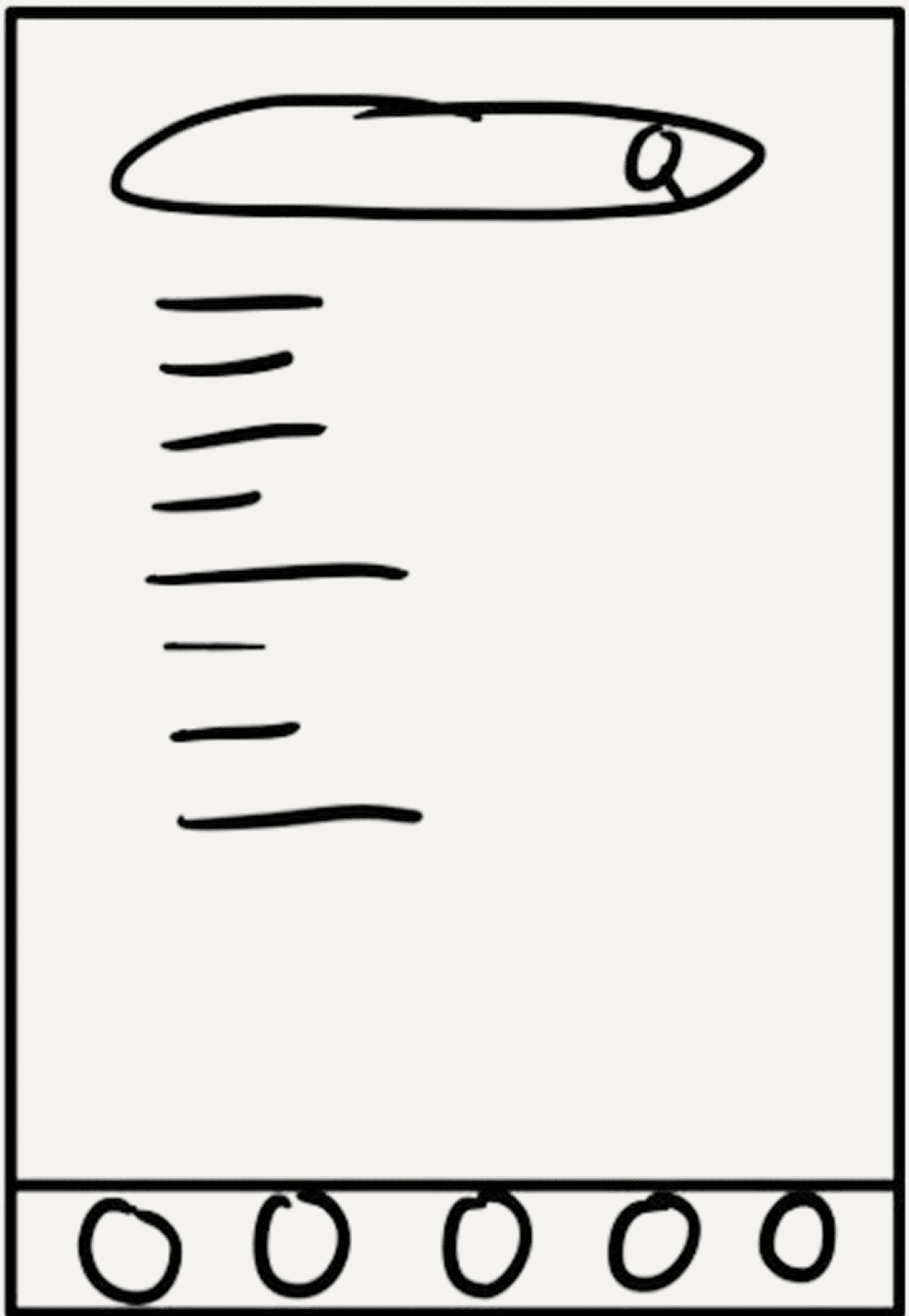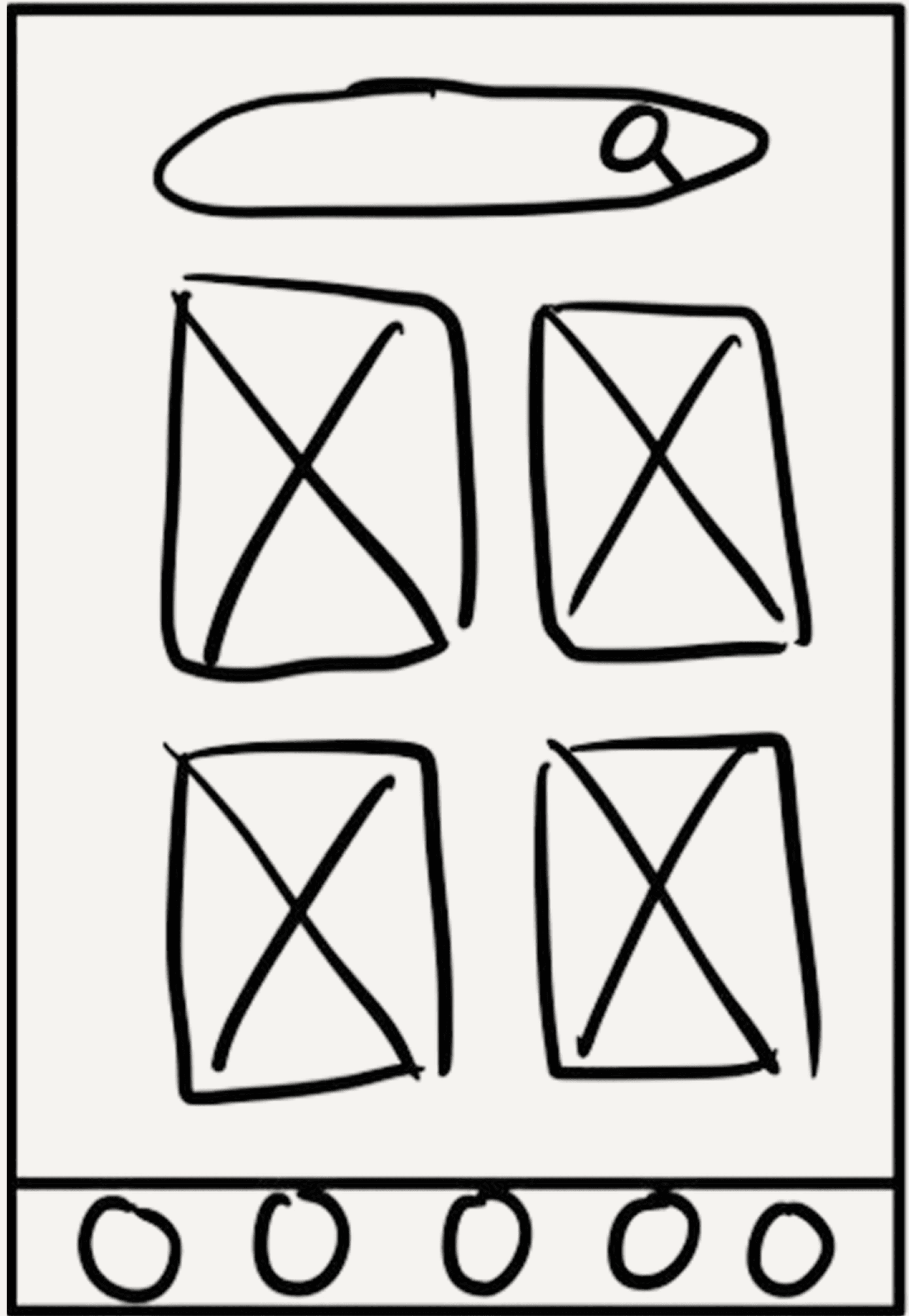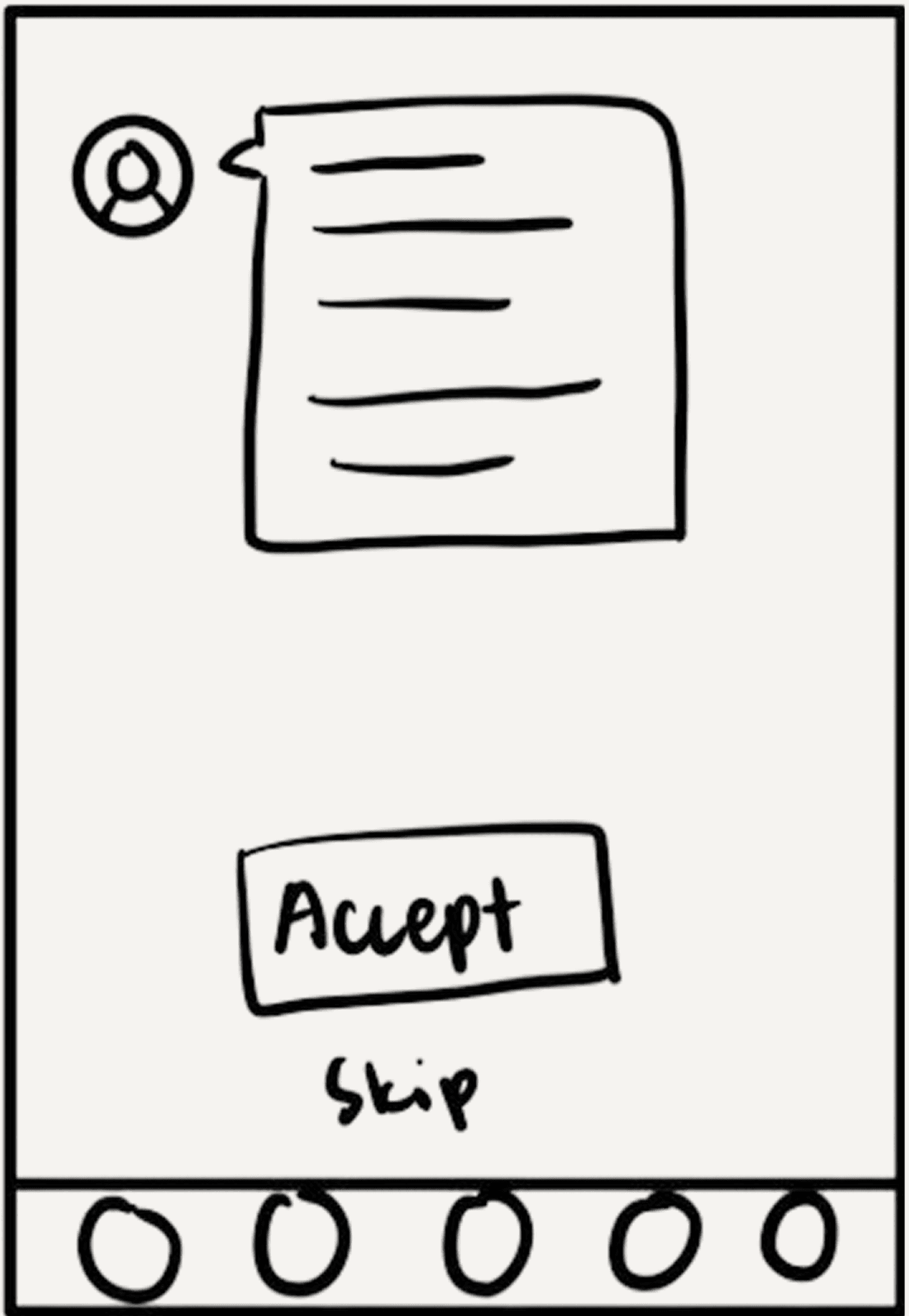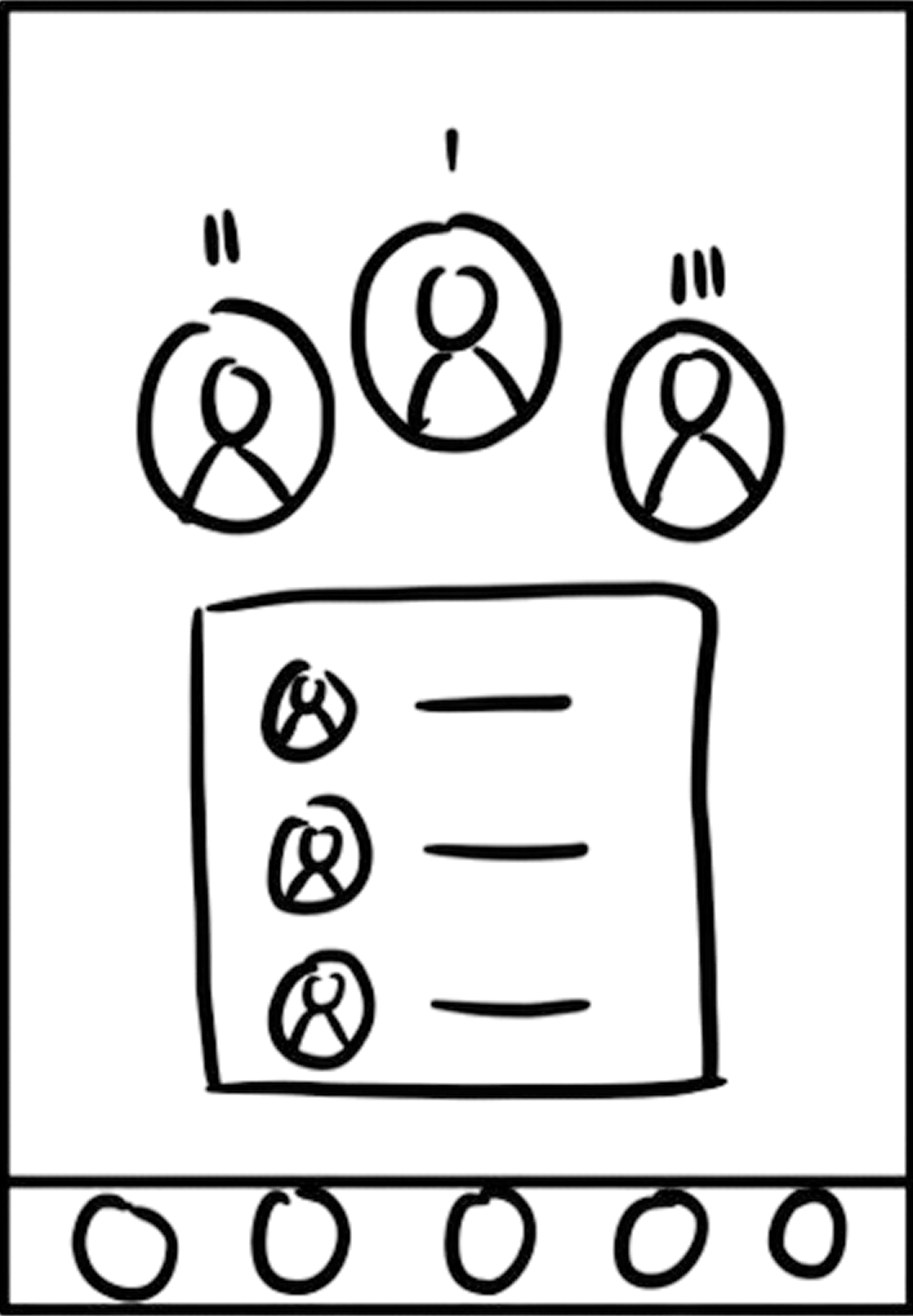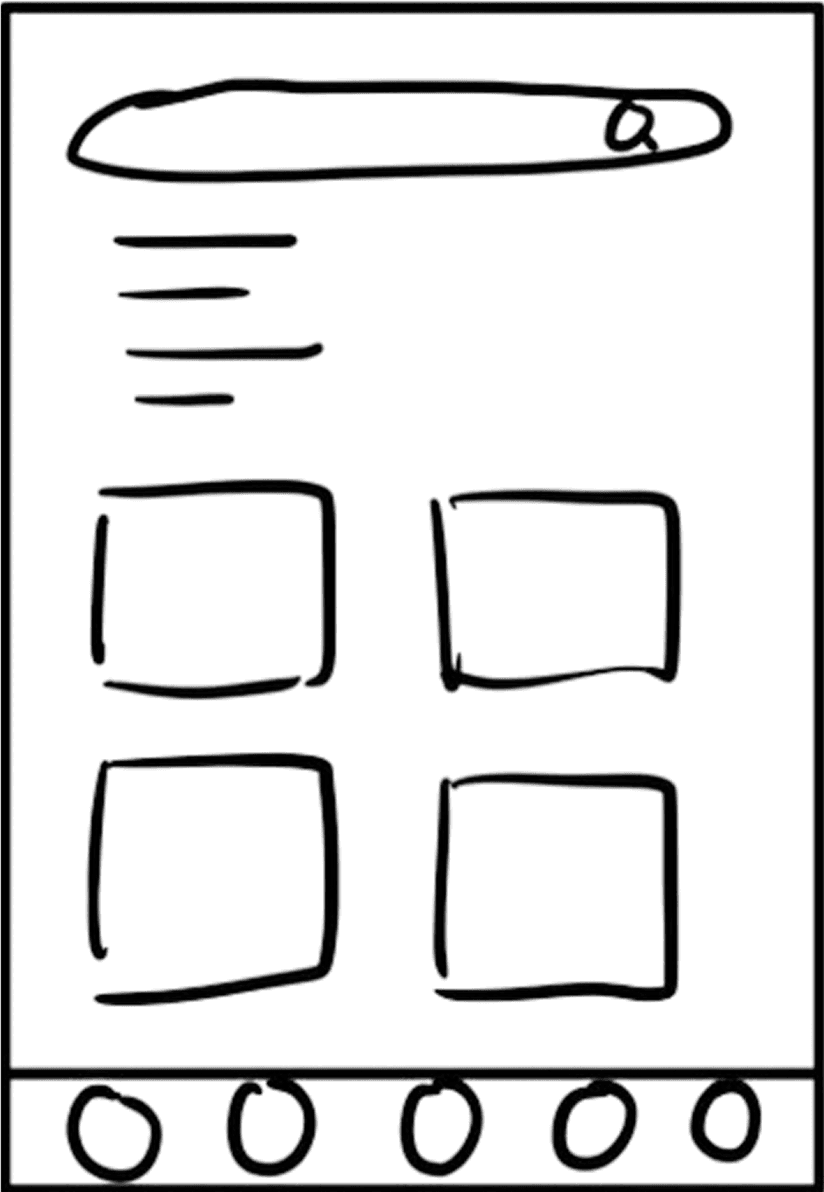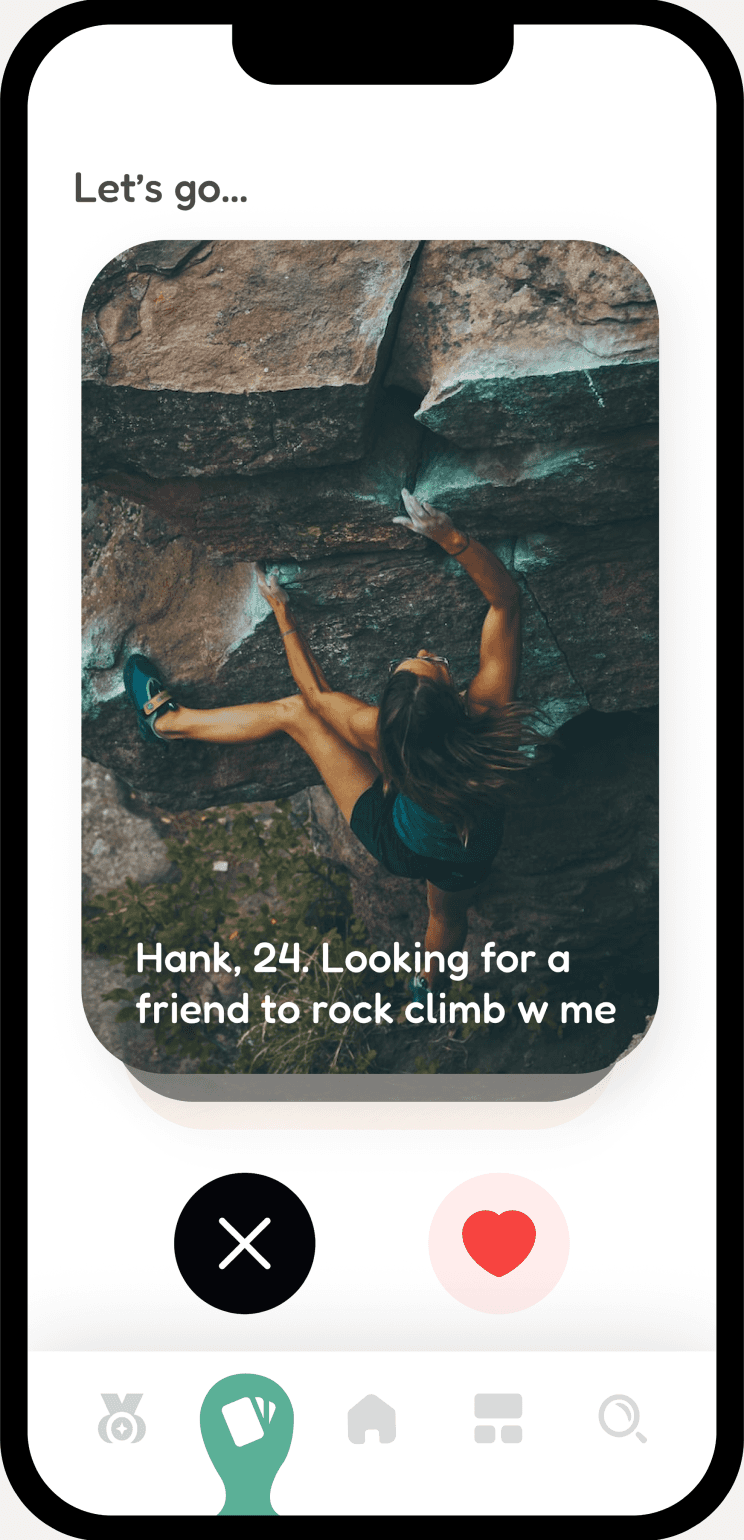Leaderboard
Challenge
My List
Feed
Discovery
Escapade at a Glance
THE PROBLEM
People dream of adventures but struggle to act on them due to:
Decision paralysis from too many options
Lack of accountability and motivation
Difficulty coordinating with friends
THE SOLUTION
Escapade combines three elements missing from existing bucket list apps:
🔍 Curated discovery (reduces overwhelm)
👥 Friend challenges (creates accountability)
🎮 Gamification (sustains motivation)
MY CONTRIBUTIONS
Led end-to-end design: research, persona development, wireframing
Designed 5 core screens with 15+ wireframe variations
Collaborated with 3 developers to balance ambition with constraints
Defined key interaction patterns and information architecture
WHY IT WON
Judges recognized:
Intuitive, accessible UI design
Innovative "Challenge a Friend" engagement model
Successfully transformed bucket lists into community-powered journeys
Design Process
We followed the Double Diamond framework to structure our 24-hour sprint:
Research & Discovery
Understanding the Problem
We began by exploring why people often dream of adventure but rarely pursue it. Secondary research revealed common patterns:
Research Constraints
With limited time, we conducted structured internal team discussions (n=4) to quickly validate these patterns. While not a substitute for extensive user research, these discussions confirmed our hypothesis: people need both inspiration AND accountability to turn bucket list dreams into reality.
With more time, we would:
Conduct external user interviews (n=8-10) and usability testing
Survey 100+ users to quantify pain points statistically
Meet Emily: Our Primary Persona
Based on our research insights and team discussions, we created Emily to represent our core user: ambitious professionals who crave adventure but struggle with decision paralysis and lack of follow-through. Emily became our north star throughout the design process—every decision was filtered through her needs.
Key Insights
From our research, we identified three critical insights that shaped Escapade's design strategy
What's Missing from Current Solutions
From Insights to Action
Our research revealed a clear opportunity: people don't lack bucket list ideas—they lack the push to act on them.
Our Solution Approach
Ideation & Design
With only 24 hours, we moved quickly from insights to sketches, exploring multiple approaches to balance feature richness with execution feasibility.
Discovery Screen Exploration
Our persona Emily's biggest pain point was decision paralysis. I explored three different approaches to help her discover adventures without feeling overwhelmed.
List-Based Discovery
✗ Endless scrolling increases overwhelm
✗ No clear entry point or structure
✗ Lacks visual hierarchy
Variation A
Card-Based Browse
✗ Cards reduce visual density
✗ Still lacks clear categorization
✗ Decision paralysis remains
Variation B
Challenge Screen Exploration
Next, we addressed Emily's fear of social pressure. She wanted accountability but worried about judgment when declining challenges or making commitments.
All Challenges at Once
✗ List of multiple challenges creates decision paralysis
✗ Overwhelming when friends send many invites
✗ Forces comparison between options instead of individual consideration
Variation A
Conversational Format
✗ Chat-style feels personal and familiar
✗ Takes too many taps to respond
✗ Feels formal and high-pressure, like declining a direct message
Variation B
Swipe Single Card
✓ One card at a time removes comparison anxiety
✓ Swipe left/right feels casual and judgment-free
✓ Quick interaction reduces friction to saying "yes"
✓ Tap buttons offer alternative for users who prefer explicit choices
✓ Selected
Complete User Flow
After locking in the discovery pattern, I designed the remaining screens to create a cohesive journey from exploration to achievement.
1
Leaderboard
2
Challenge Friends
3
My Adventures
4
Feed
5
Discovery
Final Designs
With wireframes validated by the team, I moved into high-fidelity design, focusing on three core features that directly addressed our research insights.
Curated Discovery
Category tiles and search work together to reduce decision paralysis. Emily can browse by theme when exploring or search directly when she knows what she wants.
Search Bar
Quick access for goal-driven discovery when users know what they want
Category Tiles
Visual themes organize adventures into manageable, browsable options
Featured Adventures
Curated suggestions spark inspiration without overwhelming choice
Social Challenges
The swipe-based challenge system was our breakthrough. It makes commitments feel casual and judgment-free—transforming social pressure into positive accountability.
Swipe left to decline, swipe right to accept, or tap buttons for explicit choice
Progress & Motivation
Gamification elements sustain engagement. Users track their bucket list progress and see how they compare to friends through leaderboards—creating healthy competition.
My Adventures
Personal dashboard shows in-progress and completed adventures with visual progress tracking
Leaderboard
Friend rankings and achievement streaks foster friendly competition and motivation
Complete Experience Flow
🏆
WeHack 2024 — General Design Challenge
Escapade's intuitive UX and innovative engagement model successfully transformed bucket lists from passive notes into interactive, community-powered journeys.
Competition
59 Teams
Award
1st Place Winner
Judge Recognition
Outstanding UI/UX, Innovation & Storytelling
Reflections & Learnings
This 24-hour sprint taught me valuable lessons about rapid decision-making, strategic prioritization, and designing under constraints. Here's what I took away:
✓
What Worked
→ User-centered approach kept decisions focused
→ Swipe mechanic resonated with judges and users
→ Team collaboration balanced ambition with feasibility
📚
What Worked
→ Constraints force creative problem-solving
→ Good research accelerates design decisions
→ Innovation often comes from simplifying, not adding
→
Next Steps
→ User testing to validate swipe interaction patterns
→ Accessibility audit for inclusive design
→ A/B test leaderboard impact on motivation
→ Explore AI-powered adventure recommendations










